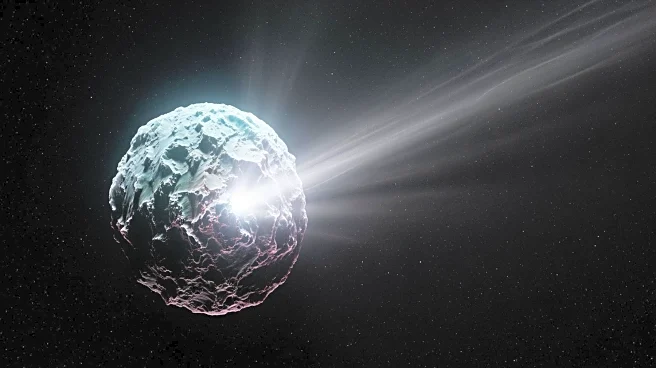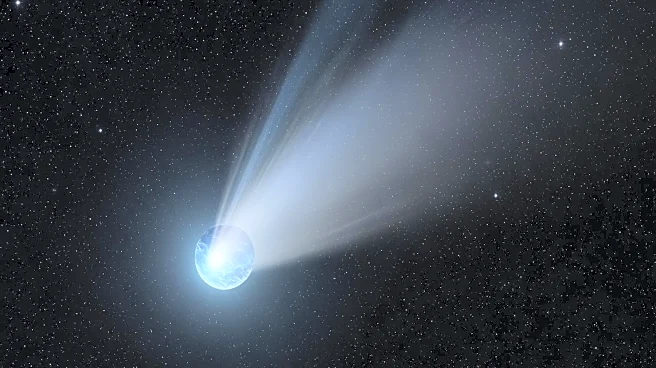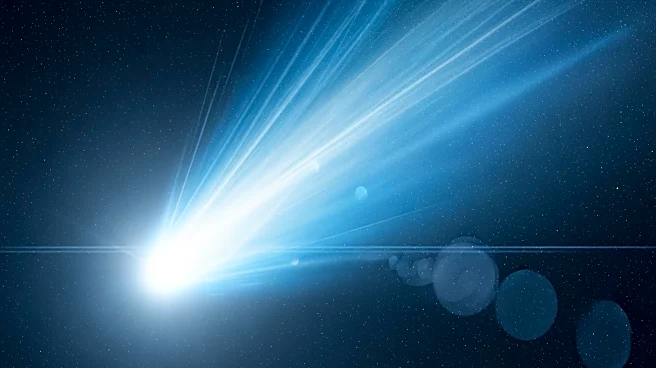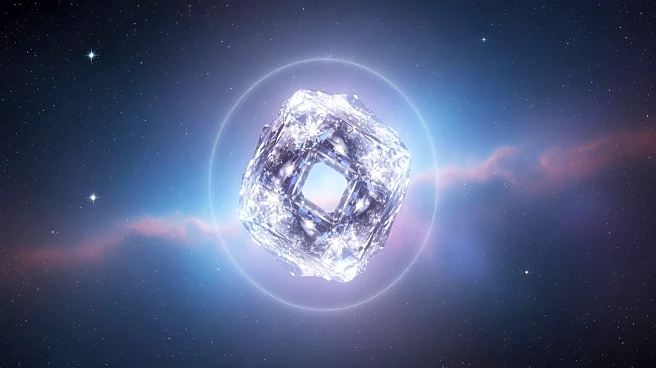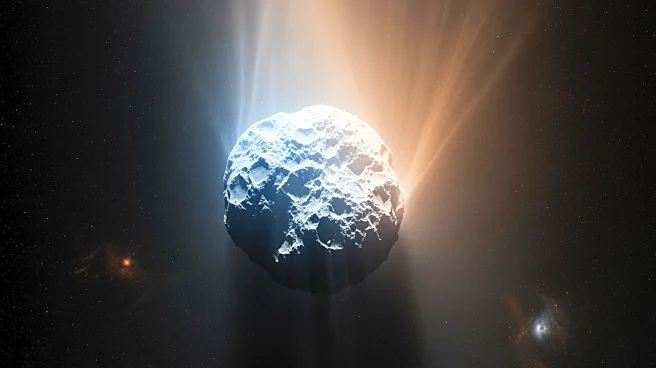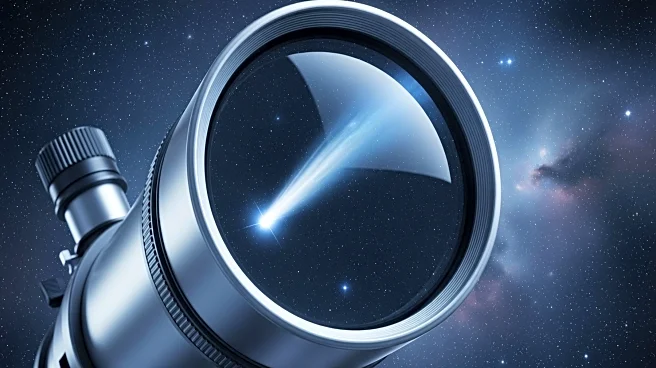What's Happening?
Harvard scientist Avi Loeb has raised questions about the nature of NASA's 3I/ATLAS comet, suggesting it may have artificial origins. Loeb's speculation is based on recent images released by NASA, which
show an unusual glow ahead of the comet, rather than trailing it as expected. This phenomenon could indicate a technological object using a beam of particles or light to clear its path of micrometeorites. Loeb's theory, shared in a blog post, challenges the conventional understanding of comets, suggesting the possibility of advanced technology at play. NASA's official stance remains that 3I/ATLAS is a comet, albeit one from outside the solar system, making it scientifically significant.
Why It's Important?
The implications of Loeb's theory could be profound, potentially altering our understanding of interstellar objects and their origins. If 3I/ATLAS is indeed a technological object, it could suggest the presence of advanced extraterrestrial technology, impacting scientific research and public perception of space exploration. This debate highlights the importance of continued observation and analysis of celestial phenomena, pushing the boundaries of current scientific knowledge. The controversy also underscores the need for transparency and collaboration in the scientific community to address such groundbreaking hypotheses.
What's Next?
Further observations and analyses are expected in the coming weeks, with large ground-based telescopes and the Hubble and Webb telescopes set to characterize the jets of 3I/ATLAS. These efforts aim to clarify the nature of the comet and address the questions raised by Loeb. The scientific community will be closely monitoring these developments, which could either confirm or refute the possibility of technological origins. NASA's continued research and public communication will play a crucial role in shaping the narrative around this celestial object.



